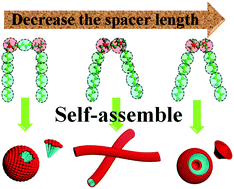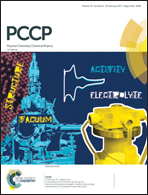Coarse-grained molecular dynamics study on the self-assembly of Gemini surfactants: the effect of spacer length†
Abstract
Gemini surfactants cause a lot of concerns owing to their unusual aggregation morphologies and superior physicochemical properties over the conventional surfactants. Research shows that the unique structure of Gemini surfactants, especially the spacer group, has a great impact on the self-assembly behaviors. To understand the determinants of this behavior on the molecular level, we carried out coarse-grained molecular dynamics (CGMD) simulations on aqueous solutions of alkanediyl-a,w-bis (dimethylcetylammonium bromide)-based surfactants with different spacer group lengths. Our simulation results demonstrated that the self-assembled morphologies of Gemini changed from spherical micelles, wormlike micelles to vesicles with the decrease in the spacer length, which were qualitatively consistent with the experimental observations. Both the microscopic dynamics processes and the self-assembly mechanisms for the formation of spherical micelles, wormlike micelles and vesicles were systematically studied through the CGMD simulations. In addition, based on the microscopic analysis, a strategy was proposed to predict the self-assembled morphology of surfactant-based systems based on simulation. This work shed light on new views in the understanding of the self-assembly of Gemini surfactants at a molecular-level and the proposed predicting strategy showed promise for practical applications.



 Please wait while we load your content...
Please wait while we load your content...